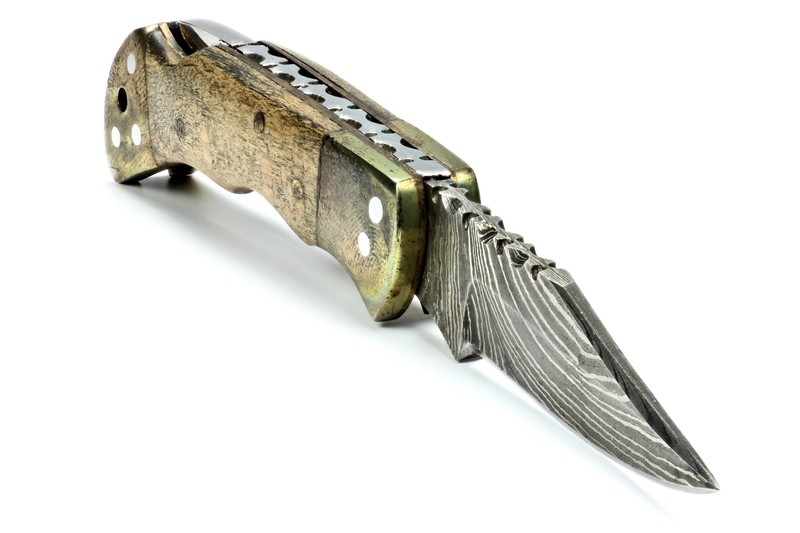You may have a small arsenal of fixed blades for your various survival kits and bug out bags, but deciding on a folding knife for EDC is an entirely different decision altogether. Check out some of the main points to look for by checking out the tips below.
Steel: A pretty knife with crappy, inferior steel is a waste of money. The Buck folder I carried for years was made of 420 stainless, and the edge-holding ability was very good. My Benchmade Griptillian is made of 154CM.
Check out which steel will work for your needs, and that can help narrow down your choices.
Not too big: A pocket knife should be small enough to be carried conveniently in your pocket, but be large enough to be useful. Don’t get carried away with the idea of a large, bulky folder. It will soon prove to be inconvenient to carry.
Lockblade: I think lock blades are highly over-rated, and may give a false sense of safety. I know of two instances where locks failed, resulting in serious injury. Nothing can completely guard against stupidity.
No serrated edge: I don’t see the value in a serrated edge. If you think you’ll need one for cutting a seatbelt, rope or something like that, then get a specialty knife with a serrated blade.
Otherwise, you’ll find that serrated edge is a specialty grind that doesn’t get used that much. It will, however, take up one of the most useful parts of the blade.
Ergonomic handle: Your pocket knife is your whittler. Make sure you can use the knife for long sessions. The handle needs to fit your hand, not get slippery when wet, and carry well in your pocket.
Not too thick: A thick pocket knife usually can’t be carried comfortably in a pocket. My personal comfort level is two layers thick. Any thicker and the knife will probably end up in a belt pouch.
Blade design: You can get anything you want, so decide what tasks you may use the knife for most often. My most-used everyday carry knife is a Swiss Army Tinker, with a three-inch spear point. My woods rambling pocket knife is frequently a Puma stockman model, with three blades: a large clip point, and smaller sheep foot and spay.
Price: You usually get what you pay for, but a quality pocket knife doesn’t have to be expensive.
Stick with name brand, quality companies, and you can find an inexpensive, practical knife.
Handle material: I love pretty knives. But a beautiful knife with a cheap blade is a waste of money. I like micarta for durability and stag for looks. Decide how important appearance is to you.
Research is going to be your best friend for any major purchase like your daily carry folding knife; it would truly suck to drop a bunch of cash on a knife just to find that you hate it within the first week of using it.
The same could be said even if you got the knife for a steal. Make sure the blade design will fit your needs, the opening/closing mechanism is user-friendly, and the steel is a reliable blend. It may be best to avoid MADE IN CHINA for that last part.
The beauty of your knife should be your last consideration, but if you hate the way your knife looks, chances are you'll be far more critical of its other design features.
Find a knife you love all the way around, and it'll be well worth the investment.
For more advice on this subject, read more at Survival Common Sense.

I’ve had a Taylors Eye Witness 2 bladed stockmans knife for about twenty years . This demands respect or accidents happen lol
Tony Gonzalez
I have the s&w extreme pocket knife great fir all situation’s
Nearly every blade I own is either Benchmade or Cold Steel. They’re durable, hold an edge well and my pocket knives are comfortable to carry.
OCK knives have some really good ones. I got the Brit. Best pocket knife I’ve ever owned.
I’ve got a few Benchmade’s. A Griptillan, a 710 that I’ve had for 12 years or so, and a 950 Rift. None have failed me, and of all the folders I have, my Benchmade’s have been the beat bang for the buck…